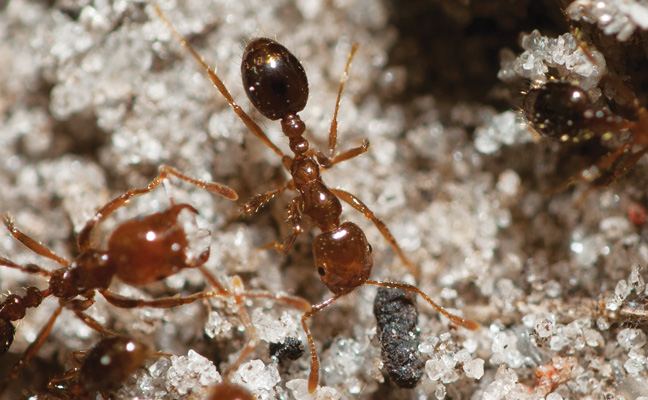
Photo: ©Gene White
Researchers at the University of Texas at Arlington are developing a high-tech, insecticide-free solution to eliminate fire ants, according to the news release.
Dr. Shouyi Wang, associate professor in the Department of Industrial, Manufacturing and Systems Engineering (IMSE), and Dr. Wei-Jen Lee, professor in the Department of Electrical Engineering, initiated a new project with entomologists from the U.S. Department of Agriculture (USDA).
The pair is using a $99,453 USDA grant to develop an innovative, artificial intelligence-driven autonomous smart system to automatically deliver fire ant mound treatment using insecticide-free solutions. The team members also include Jianzhong Su, professor in the math department, and Dr. Chen Kan, assistant professor in the IMSE department.
“We want to use artificial intelligence, the Internet of Things (IoT), unmanned aerial vehicles (UAVs) and unmanned ground vehicles (UGVs) to find these fire ant mounds and deliver treatment solutions autonomously,” Dr. Wang said in the release. “The USDA pest control researchers have found that hot water or water with detergent can be effective green solutions to eliminate fire ants. However, those insecticide-free, water-based studies are very limited.”
He said the team will study those methods more in-depth and provide scientific guidelines to evaluate them.
“We will use machine learning to study the relationship between fire ant mound size and the required quantity and frequency of water solutions to eradicate the entire colony,” Dr. Wang said.
The project also will explore using steam as an alternative method of eliminating fire ant mounds.
The second goal of the project will be to develop a UAV system to monitor a target field or pasture to identify fire ant mounds using deep learning and remote sensing technologies. The UAV would send the detected fire ant mound location to a UGV system, which will be deployed to automatically dispense the water-based solutions. This UGV system will be equipped with a water tank and a robot arm-controlled water injection tube and be run by an integrated artificial intelligence system.
According to Texas A&M University AgriLife Research and Extension, the economic impact of fire ants is about $1.2 billion annually. About 14 million people are stung annually. While most mounds are about 18 inches or shorter in height, some can be several feet tall.
Leave A Comment